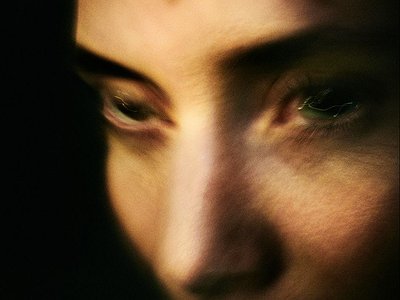Name: Li Lykke Timotej Zachrisson aka Lykke Li
Nationality: Swedish
Occupation: Singer, songwriter, model
Recent Release: Lykke Li's Eyeye, co-written and -produced by Björn Yttling and mixed by Shawn Everett, is out via Play it again Sam.
If this interview with Lykke Li piqued your interest, visit her official website for more information and music. She is also on Instagram, Facebook, Soundcloud, and twitter.
This interview with the group was originally conducted for beat magazine by Sascha Blach aka Mansions in the Sea.
Eyeye seems like an antithesis to all the polished pop albums that the market spits out week after week. Was it a conscious approach to make a kind of anti-album?
I had the idea already before the pandemic. I was lying in my bed listening to voice memos I had recorded. While doing that, I thought I wanted to make something that was just as intimate and raw.
It was going to be an album I made for myself, for my 19-year-old self. I didn't want to worry about anything other than making it feel right.
The album sounds very rough and pure - as if you hadn't edited anything afterwards.
The sound took shape in the mix. It was a bit like painting with sounds.
In which way?
I remember saying to Shawn one night while mixing, "this sounds interesting, but it sounds like the sun and I want it to sound like you're looking at the moon." This always resulted in changes of direction, but it was like painting something over an existing picture and taking away other layers.
Not only did we transfer all the songs to tape, but we also experimented a lot. For example, we reamped a track in a big room or wrapped plastic around a microphone and then submerged it under water. That's how interesting textures were created. We also worked a lot with panning and used the whole range from mono to stereo. The same goes for the spatiality.
Where do you see the biggest differences to your previous productions?
On the one hand it was quite different from the last time, but on the other hand it was quite similar, because in my early days I also produced music like that, alone in my bedroom with an 8-track recorder. Then, when I met Björn, it was just the two of us working. Just him, me, an MPC and a guitar.
I think I learned a lot from my last album, So Sad So Sexy. I wanted to try new things. I had always said no to collaborations before, but I was curious to see what would happen. In retrospect, though, it wasn't necessarily my best album. So I wanted to go back to my origins and work with the person with whom I created my most profound works - and that's Björn.
This time, we did record some extra drums in a small studio in Stockholm, but strictly speaking that's also just a basement room. Everything was very intimate and cozy.
You also hear a lot of noise and background noise from outside, right?
Oh yes, because my living room and bedroom are completely uninsulated. You can hear the lake from outside as well as birds, but also sometimes a dishwasher or door slamming. Shawn's studio is downtown, so you can pick up a lot of buzzing and humming there with the windows open. We also recorded the sounds of the tape recorders running.
That makes it very authentic, because it captures the moment unfiltered. Has other music influenced you in the process?
I always listen to a lot of different music, but around the recording I mostly listened to instrumental music like Brian Eno as well as crazy synth stuff or Swedish film music from the 70s where you hear the tape, the imperfection, the breathing or the playing sounds of organs or Rhodes. I found that very hypnotic.
Why did you not use headphones and click tracks?
Because that always takes me out of the moment. I want to be free and present in the emotions. That's very important to me, so I can connect very directly with the lyrics. And when I'm wearing headphones and the click starts, the connection with the spirit disappears pretty quickly.
And why did you use an old drum mic for the vocal recordings? Because of the sound or out of sheer pragmatism because nothing else was at hand?
It worked well with my voice. I don't know, it just felt good in the hand, wasn't too heavy and very small. So I felt less pressure. I think it was also a psychological thing.
Can you talk more about other tools you used?
There were quite a few synths and guitars that went through reverse pedals and similar effects. It was supposed to sound unusual.
I'm bad at remembering names, unfortunately, but I remember we used this new mini synth from Yamaha and Björn had a Chroma, among other things, but also a complete rack with stuff.
[Read our feature about Fender Rhodes Chroma with Enabler]
Was the laptop the only digital element in the recordings?
Yes exactly, because the mix was also done on tape. We worked with an analog mixer and a tape machine. To do that, we transferred every single sound to tape first and then processed it with different effects and pedals before we transferred it back.
What will be your future development after such an album?
That's my way into the future. I can well imagine that the next album will be even more reduced. I hope that one day I will be good enough to make my own Nebraska.




